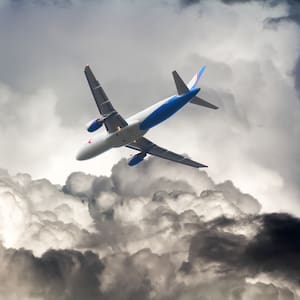Severe turbulence hospitalised two New Zealanders and killed one passenger overnight, aboard Singapore Airlines Flight SQ321. The service was diverted to Bangkok with dozens requiring medical attention, as the sudden drop reportedly took many off guard. But what is clear air turbulence and how much warning do pilots and passengers have? Passenger Andrew Davies told Sky News there was little warning before the cabin seatbelt sign was illuminated, and no time for crew to take seats.
In aviation unexpected rough airflow is described as clear air turbulence as it comes out of what was forecast to be clear, predictable, air currents. Flying at high altitude and over large bodies of water or mountain ranges can cause orthographic turbulence. However, airlines and meteorological reports can normally forecast patches of rough flying and warn the pilots.

Clear air turbulence comes out of the blue. What causes clear air turbulence? Severe clear air turbulence is caused by either hot air rising in thermal currents or opposing currents meeting. High altitude flights may encounter strong “jet stream” air currents, at above 10,000m.
Changes in air temperature mixed with fast-moving currents can lead to unpredictable, “strong” or “severe” clear air turbulence. Rising clouds and thunderstorms can also provide unpredictable currents for aircraft passing overhead, and pilots often choose to fly around areas with storms forecast. What warning do pilots have of clear air turbulence? .
















